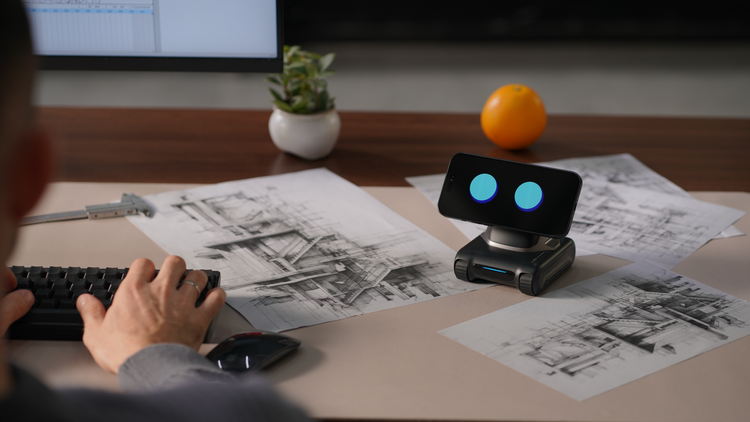Blue Lion and Doudna: The Future of Supercomputing with NVIDIA Vera Rubin Architecture
11th June 2025, Word Count: 2000
In the rapidly evolving world of high-performance computing (HPC), two groundbreaking supercomputers, Blue Lion at Germany’s Leibniz Supercomputing Centre (LRZ) and Doudna at Lawrence Berkeley National Laboratory, are set to redefine scientific research. Both systems are powered by NVIDIA’s cutting-edge Vera Rubin architecture, a next-generation platform designed to integrate artificial intelligence (AI), simulation, and data processing into a single, high-performance engine. This article dives into the details of these supercomputers, the revolutionary Vera Rubin architecture, and their transformative impact on scientific discovery, all while optimizing for SEO to ensure maximum visibility for tech enthusiasts, researchers, and HPC professionals.
What Is the Blue Lion Supercomputer?
The Blue Lion supercomputer, set to be deployed at Germany’s Leibniz Supercomputing Centre (LRZ), represents a monumental leap in computational power. As part of the Gauss Centre for Supercomputing, Germany’s premier HPC institution, Blue Lion is designed to deliver approximately 30 times more computing power than its predecessor, SuperMUC-NG. This massive performance boost positions Blue Lion as a cornerstone for European research in fields like climate modeling, turbulence analysis, physics, and machine learning.
Key Features of Blue Lion
Built by Hewlett Packard Enterprise (HPE), Blue Lion leverages the NVIDIA Vera Rubin architecture, which combines the Rubin GPU and Vera CPU to create a seamless, high-bandwidth, low-latency platform. Here are the standout features of Blue Lion:
- Next-Generation HPE Cray Technology: Blue Lion incorporates HPE’s advanced Cray supercomputing framework, known for its scalability and efficiency.
- NVIDIA Vera Rubin Superchip: The system is powered by NVIDIA’s Rubin GPU, the successor to the Blackwell architecture, and the Vera CPU, NVIDIA’s first custom CPU designed for HPC and AI workloads.
- 100% Fanless Liquid Cooling: Blue Lion uses HPE’s direct liquid-cooling system, utilizing warm water to efficiently dissipate heat, reducing energy consumption and enabling heat reuse for nearby buildings.
- High-Performance Storage and Interconnect: The supercomputer is equipped with robust storage solutions and high-speed interconnects, ensuring rapid data transfer and processing.
- Scalable Workflows: Blue Lion supports large-scale research projects, allowing jobs to scale across the entire system for maximum efficiency.
- Sustainability Focus: By reusing heat generated from its racks, Blue Lion contributes to eco-friendly computing practices, aligning with global sustainability goals.
Blue Lion’s Role in European Research
Blue Lion is more than a local asset for LRZ. It is designed to support collaborative research projects across Europe, enabling scientists to tackle complex challenges in climate science, physics, and AI-driven discoveries. By providing a platform that integrates traditional simulation with modern AI techniques, Blue Lion empowers researchers to push the boundaries of scientific innovation.
SEO Keywords: Blue Lion supercomputer, Leibniz Supercomputing Centre, NVIDIA Vera Rubin, HPE Cray technology, high-performance computing, AI-driven research, sustainable supercomputing, European research collaboration.
Introducing the Doudna Supercomputer
Across the Atlantic, the Doudna supercomputer at Lawrence Berkeley National Laboratory in California is another flagship system powered by the NVIDIA Vera Rubin architecture. Named after Nobel laureate Jennifer Doudna, a pioneer in CRISPR gene-editing technology, this supercomputer is set to serve over 11,000 researchers when it launches in 2026. Built by Dell Technologies, Doudna is optimized for real-time scientific workflows, offering unparalleled performance for energy-efficient computing.
Doudna’s Cutting-Edge Capabilities
Doudna is engineered to handle the demands of modern science, from fusion energy research to materials discovery and biology. Its key features include:
- Vera Rubin Architecture: Like Blue Lion, Doudna is powered by the Rubin GPU and Vera CPU, enabling seamless integration of AI, simulation, and data analytics.
- NVIDIA Quantum-X800 InfiniBand Networking: This high-speed networking technology allows data from telescopes, genome sequencers, and fusion experiments to stream directly into the system, enabling instant processing and live feedback loops.
- Energy Efficiency: Doudna delivers 10 times more application performance than its predecessor while using only 2-3 times the power, resulting in 3-5 times better performance per watt.
- Real-Time Workflows: The system is optimized for real-time data processing, making it ideal for dynamic scientific experiments that require immediate results.
- Support for Diverse Research: Doudna will accelerate discoveries in fields like fusion energy, materials science, and genomics, driving breakthroughs that address global challenges.
Doudna’s Impact on U.S. Research

As a project of the U.S. Department of Energy, Doudna is poised to become a cornerstone of American scientific research. Its ability to process massive datasets in real time and deliver energy-efficient performance makes it a game-changer for researchers working on climate change, renewable energy, and biological advancements.
SEO Keywords: Doudna supercomputer, Lawrence Berkeley National Laboratory, NVIDIA Vera Rubin, Dell Technologies, real-time scientific workflows, energy-efficient computing, fusion energy research.
What Is the NVIDIA Vera Rubin Architecture?
At the heart of both Blue Lion and Doudna lies the NVIDIA Vera Rubin architecture, a revolutionary platform named after the renowned astronomer who pioneered research on dark matter. The Vera Rubin superchip is designed to collapse the boundaries between AI, simulation, and data processing, creating a unified engine for scientific discovery.
Components of Vera Rubin
The Vera Rubin architecture consists of two key components:
- Rubin GPU: The successor to NVIDIA’s Blackwell GPU, the Rubin GPU is optimized for high-performance computing and AI workloads. It delivers unprecedented computational power, enabling researchers to tackle complex simulations and machine learning tasks.
- Vera CPU: NVIDIA’s first custom CPU, the Vera CPU is designed to work in lockstep with the Rubin GPU. This synergy ensures coherent compute, shared memory, and in-network acceleration, resulting in a high-bandwidth, low-latency platform.
Why Vera Rubin Matters
The Vera Rubin architecture is built for the future of science, where AI and simulation are no longer separate disciplines. By integrating these capabilities into a single platform, Vera Rubin enables researchers to:
- Process massive datasets in real time.
- Run complex simulations with unprecedented speed.
- Leverage AI to uncover patterns and insights that were previously inaccessible.
- Achieve energy-efficient computing, reducing the environmental impact of HPC.
Launch Timeline: The Vera Rubin architecture is set to debut in the second half of 2026, powering systems like Blue Lion and Doudna to drive the next wave of scientific breakthroughs.
SEO Keywords: NVIDIA Vera Rubin architecture, Rubin GPU, Vera CPU, AI-driven supercomputing, high-performance computing, scientific discovery platform, energy-efficient HPC.




One thought on “What Is the Blue Lion Supercomputer?”